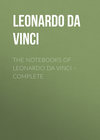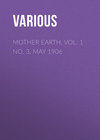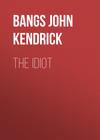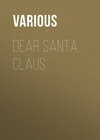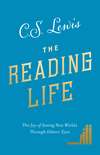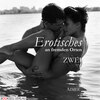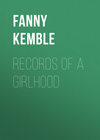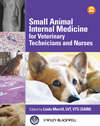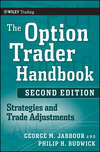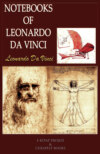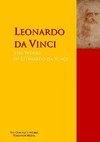Kitabı oku: «The Notebooks of Leonardo Da Vinci. Complete», sayfa 23
592
OF GRACE IN THE LIMBS.
The limbs should be adapted to the body with grace and with reference to the effect that you wish the figure to produce. And if you wish to produce a figure that shall of itself look light and graceful you must make the limbs elegant and extended, and without too much display of the muscles; and those few that are needed for your purpose you must indicate softly, that is, not very prominent and without strong shadows; the limbs, and particularly the arms easy; that is, none of the limbs should be in a straight line with the adjoining parts. And if the hips, which are the pole of a man, are by reason of his position, placed so, that the right is higher than the left, make the point of the higher shoulder in a perpendicular line above the highest prominence of the hip, and let this right shoulder be lower than the left. Let the pit of the throat always be over the centre of the joint of the foot on which the man is leaning. The leg which is free should have the knee lower than the other, and near the other leg. The positions of the head and arms are endless and I shall therefore not enlarge on any rules for them. Still, let them be easy and pleasing, with various turns and twists, and the joints gracefully bent, that they may not look like pieces of wood.
Of appropriate gestures (593-600).
593
A picture or representation of human figures, ought to be done in such a way as that the spectator may easily recognise, by means of their attitudes, the purpose in their minds. Thus, if you have to represent a man of noble character in the act of speaking, let his gestures be such as naturally accompany good words; and, in the same way, if you wish to depict a man of a brutal nature, give him fierce movements; as with his arms flung out towards the listener, and his head and breast thrust forward beyond his feet, as if following the speaker's hands. Thus it is with a deaf and dumb person who, when he sees two men in conversation—although he is deprived of hearing—can nevertheless understand, from the attitudes and gestures of the speakers, the nature of their discussion. I once saw in Florence a man who had become deaf who, when you spoke very loud did not understand you, but if you spoke gently and without making any sound, understood merely from the movement of the lips. Now perhaps you will say that the lips of a man who speaks loudly do not move like those of one speaking softly, and that if they were to move them alike they would be alike understood. As to this argument, I leave the decision to experiment; make a man speak to you gently and note [the motion of] his lips.
[Footnote: The first ten lines of this text have already been published, but with a slightly different reading by Dr. M. JORDAN: Das Malerbuch Leonardo da Vinci's p. 86.]
594
OF REPRESENTING A MAN SPEAKING TO A MULTITUDE.
When you wish to represent a man speaking to a number of people, consider the matter of which he has to treat and adapt his action to the subject. Thus, if he speaks persuasively, let his action be appropriate to it. If the matter in hand be to set forth an argument, let the speaker, with the fingers of the right hand hold one finger of the left hand, having the two smaller ones closed; and his face alert, and turned towards the people with mouth a little open, to look as though he spoke; and if he is sitting let him appear as though about to rise, with his head forward. If you represent him standing make him leaning slightly forward with body and head towards the people. These you must represent as silent and attentive, all looking at the orator's face with gestures of admiration; and make some old men in astonishment at the things they hear, with the corners of their mouths pulled down and drawn in, their cheeks full of furrows, and their eyebrows raised, and wrinkling the forehead where they meet. Again, some sitting with their fingers clasped holding their weary knees. Again, some bent old man, with one knee crossed over the other; on which let him hold his hand with his other elbow resting in it and the hand supporting his bearded chin.
[Footnote: The sketches introduced here are a facsimile of a pen and ink drawing in the Louvre which Herr CARL BRUN considers as studies for the Last Supper in the church of Santa Maria delle Grazie (see Leonardo da Vinci, LXI, pp. 21, 27 and 28 in DOHME'S Kunst und Kunstler, Leipzig, Seemann). I shall not here enter into any discussion of this suggestion; but as a justification for introducing the drawing in this place, I may point out that some of the figures illustrate this passage as perfectly as though they had been drawn for that express purpose. I have discussed the probability of a connection between this sketch and the picture of the Last Supper on p. 335. The original drawing is 27 3/4 centimetres wide by 21 high.—The drawing in silver point on reddish paper given on Pl. LII. No. 1—the original at Windsor Castle—may also serve to illustrate the subject of appropriate gestures, treated in Nos. 593 and 594.]
595
OF THE DISPOSITION OF LIMBS.
As regards the disposition of limbs in movement you will have to consider that when you wish to represent a man who, by some chance, has to turn backwards or to one side, you must not make him move his feet and all his limbs towards the side to which he turns his head. Rather must you make the action proceed by degrees and through the different joints; that is, those of the foot, the knee and the hip and the neck. And if you set him on the right leg, you must make the left knee bend inwards, and let his foot be slightly raised on the outside, and the left shoulder be somewhat lower than the right, while the nape of the neck is in a line directly over the outer ancle of the left foot. And the left shoulder will be in a perpendicular line above the toes of the right foot. And always set your figures so that the side to which the head turns is not the side to which the breast faces, since nature for our convenience has made us with a neck which bends with ease in many directions, the eye wishing to turn to various points, the different joints. And if at any time you make a man sitting with his arms at work on something which is sideways to him, make the upper part of his body turn upon the hips.
[Footnote: Compare Pl. VII, No. 5. The original drawing at Windsor Castle is numbered 104.]
596
When you draw the nude always sketch the whole figure and then finish those limbs which seem to you the best, but make them act with the other limbs; otherwise you will get a habit of never putting the limbs well together on the body.
Never make the head turn the same way as the torso, nor the arm and leg move together on the same side. And if the face is turned to the right shoulder, make all the parts lower on the left side than on the right; and when you turn the body with the breast outwards, if the head turns to the left side make the parts on the right side higher than those on the left.
[Footnote: In the original MS. a much defaced sketch is to be seen by the side of the second part of this chapter; its faded condition has rendered reproduction impossible. In M. RAVAISSON'S facsimile the outlines of the head have probably been touched up. This passage however is fitly illustrated by the drawings on Pl. XXI.]
597
OF PAINTING.
Of the nature of movements in man. Do not repeat the same gestures in the limbs of men unless you are compelled by the necessity of their action, as is shown in a b.
[Footnote: See Pl. V, where part of the text is also reproduced. The effaced figure to the extreme left has evidently been cancelled by Leonardo himself as unsatisfactory.]
598
The motions of men must be such as suggest their dignity or their baseness.
599
OF PAINTING.
Make your work carry out your purpose and meaning. That is when you draw a figure consider well who it is and what you wish it to be doing.
OF PAINTING.
With regard to any action which you give in a picture to an old man or to a young one, you must make it more energetic in the young man in proportion as he is stronger than the old one; and in the same way with a young man and an infant.
600
OF SETTING ON THE LIMBS.
The limbs which are used for labour must be muscular and those which are not much used you must make without muscles and softly rounded.
OF THE ACTION OF THE FIGURES.
Represent your figures in such action as may be fitted to express what purpose is in the mind of each; otherwise your art will not be admirable.
V
SUGGESTIONS FOR COMPOSITIONS
Of painting battle pieces (601-603).
601
OF THE WAY OF REPRESENTING A BATTLE.
First you must represent the smoke of artillery mingling in the air with the dust and tossed up by the movement of horses and the combatants. And this mixture you must express thus: The dust, being a thing of earth, has weight; and although from its fineness it is easily tossed up and mingles with the air, it nevertheless readily falls again. It is the finest part that rises highest; hence that part will be least seen and will look almost of the same colour as the air. The higher the smoke mixed with the dust-laden air rises towards a certain level, the more it will look like a dark cloud; and it will be seen that at the top, where the smoke is more separate from the dust, the smoke will assume a bluish tinge and the dust will tend to its colour. This mixture of air, smoke and dust will look much lighter on the side whence the light comes than on the opposite side. The more the combatants are in this turmoil the less will they be seen, and the less contrast will there be in their lights and shadows. Their faces and figures and their appearance, and the musketeers as well as those near them you must make of a glowing red. And this glow will diminish in proportion as it is remote from its cause.
The figures which are between you and the light, if they be at a distance, will appear dark on a light background, and the lower part of their legs near the ground will be least visible, because there the dust is coarsest and densest [19]. And if you introduce horses galloping outside the crowd, make the little clouds of dust distant from each other in proportion to the strides made by the horses; and the clouds which are furthest removed from the horses, should be least visible; make them high and spreading and thin, and the nearer ones will be more conspicuous and smaller and denser [23]. The air must be full of arrows in every direction, some shooting upwards, some falling, some flying level. The balls from the guns must have a train of smoke following their flight. The figures in the foreground you must make with dust on the hair and eyebrows and on other flat places likely to retain it. The conquerors you will make rushing onwards with their hair and other light things flying on the wind, with their brows bent down,
[Footnote: 19—23. Compare 608. 57—75.]
602
and with the opposite limbs thrust forward; that is where a man puts forward the right foot the left arm must be advanced. And if you make any one fallen, you must show the place where he has slipped and been dragged along the dust into blood stained mire; and in the half-liquid earth arround show the print of the tramping of men and horses who have passed that way. Make also a horse dragging the dead body of his master, and leaving behind him, in the dust and mud, the track where the body was dragged along. You must make the conquered and beaten pale, their brows raised and knit, and the skin above their brows furrowed with pain, the sides of the nose with wrinkles going in an arch from the nostrils to the eyes, and make the nostrils drawn up—which is the cause of the lines of which I speak—, and the lips arched upwards and discovering the upper teeth; and the teeth apart as with crying out and lamentation. And make some one shielding his terrified eyes with one hand, the palm towards the enemy, while the other rests on the ground to support his half raised body. Others represent shouting with their mouths open, and running away. You must scatter arms of all sorts among the feet of the combatants, as broken shields, lances, broken swords and other such objects. And you must make the dead partly or entirely covered with dust, which is changed into crimson mire where it has mingled with the flowing blood whose colour shows it issuing in a sinuous stream from the corpse. Others must be represented in the agonies of death grinding their teeth, rolling their eyes, with their fists clenched against their bodies and their legs contorted. Some might be shown disarmed and beaten down by the enemy, turning upon the foe, with teeth and nails, to take an inhuman and bitter revenge. You might see some riderless horse rushing among the enemy, with his mane flying in the wind, and doing no little mischief with his heels. Some maimed warrior may be seen fallen to the earth, covering himself with his shield, while the enemy, bending over him, tries to deal him a deathstroke. There again might be seen a number of men fallen in a heap over a dead horse. You would see some of the victors leaving the fight and issuing from the crowd, rubbing their eyes and cheeks with both hands to clean them of the dirt made by their watering eyes smarting from the dust and smoke. The reserves may be seen standing, hopeful but cautious; with watchful eyes, shading them with their hands and gazing through the dense and murky confusion, attentive to the commands of their captain. The captain himself, his staff raised, hurries towards these auxiliaries, pointing to the spot where they are most needed. And there may be a river into which horses are galloping, churning up the water all round them into turbulent waves of foam and water, tossed into the air and among the legs and bodies of the horses. And there must not be a level spot that is not trampled with gore.
603
OF LIGHTING THE LOWER PARTS OF BODIES CLOSE TOGETHER, AS OF MEN IN BATTLE.
As to men and horses represented in battle, their different parts will be dark in proportion as they are nearer to the ground on which they stand. And this is proved by the sides of wells which grow darker in proportion to their depth, the reason of which is that the deepest part of the well sees and receives a smaller amount of the luminous atmosphere than any other part.
And the pavement, if it be of the same colour as the legs of these said men and horses, will always be more lighted and at a more direct angle than the said legs &c.
604
OF THE WAY TO REPRESENT A NIGHT [SCENE].
That which is entirely bereft of light is all darkness; given a night under these conditions and that you want to represent a night scene,—arrange that there shall be a great fire, then the objects which are nearest to this fire will be most tinged with its colour; for those objects which are nearest to a coloured light participate most in its nature; as therefore you give the fire a red colour, you must make all the objects illuminated by it ruddy; while those which are farther from the fire are more tinted by the black hue of night. The figures which are seen against the fire look dark in the glare of the firelight because that side of the objects which you see is tinged by the darkness of the night and not by the fire; and those who stand at the side are half dark and half red; while those who are visible beyond the edges of the flame will be fully lighted by the ruddy glow against a black background. As to their gestures, make those which are near it screen themselves with their hands and cloaks as a defence against the intense heat, and with their faces turned away as if about to retire. Of those farther off represent several as raising their hands to screen their eyes, hurt by the intolerable glare.
Of depicting a tempest (605. 606).
605
Describe a wind on land and at sea. Describe a storm of rain.
606
HOW TO REPRESENT A TEMPEST.
If you wish to represent a tempest consider and arrange well its effects as seen, when the wind, blowing over the face of the sea and earth, removes and carries with it such things as are not fixed to the general mass. And to represent the storm accurately you must first show the clouds scattered and torn, and flying with the wind, accompanied by clouds of sand blown up from the sea shore, and boughs and leaves swept along by the strength and fury of the blast and scattered with other light objects through the air. Trees and plants must be bent to the ground, almost as if they would follow the course of the gale, with their branches twisted out of their natural growth and their leaves tossed and turned about [Footnote 11: See Pl. XL, No. 2.]. Of the men who are there some must have fallen to the ground and be entangled in their garments, and hardly to be recognized for the dust, while those who remain standing may be behind some tree, with their arms round it that the wind may not tear them away; others with their hands over their eyes for the dust, bending to the ground with their clothes and hair streaming in the wind. [Footnote 15: See Pl. XXXIV, the right hand lower sketch.] Let the sea be rough and tempestuous and full of foam whirled among the lofty waves, while the wind flings the lighter spray through the stormy air, till it resembles a dense and swathing mist. Of the ships that are therein some should be shown with rent sails and the tatters fluttering through the air, with ropes broken and masts split and fallen. And the ship itself lying in the trough of the sea and wrecked by the fury of the waves with the men shrieking and clinging to the fragments of the vessel. Make the clouds driven by the impetuosity of the wind and flung against the lofty mountain tops, and wreathed and torn like waves beating upon rocks; the air itself terrible from the deep darkness caused by the dust and fog and heavy clouds.
Of representing the deluge (607-609).
607
TO REPRESENT THE DELUGE.
The air was darkened by the heavy rain whose oblique descent driven aslant by the rush of the winds, flew in drifts through the air not otherwise than as we see dust, varied only by the straight lines of the heavy drops of falling water. But it was tinged with the colour of the fire kindled by the thunder-bolts by which the clouds were rent and shattered; and whose flashes revealed the broad waters of the inundated valleys, above which was seen the verdure of the bending tree tops. Neptune will be seen in the midst of the water with his trident, and [15] let AEolus with his winds be shown entangling the trees floating uprooted, and whirling in the huge waves. The horizon and the whole hemisphere were obscure, but lurid from the flashes of the incessant lightning. Men and birds might be seen crowded on the tall trees which remained uncovered by the swelling waters, originators of the mountains which surround the great abysses [Footnote 23: Compare Vol. II. No. 979.].
608
OF THE DELUGE AND HOW TO REPRESENT IT IN A PICTURE.
Let the dark and gloomy air be seen buffeted by the rush of contrary winds and dense from the continued rain mingled with hail and bearing hither and thither an infinite number of branches torn from the trees and mixed with numberless leaves. All round may be seen venerable trees, uprooted and stripped by the fury of the winds; and fragments of mountains, already scoured bare by the torrents, falling into those torrents and choking their valleys till the swollen rivers overflow and submerge the wide lowlands and their inhabitants. Again, you might have seen on many of the hill-tops terrified animals of different kinds, collected together and subdued to tameness, in company with men and women who had fled there with their children. The waters which covered the fields, with their waves were in great part strewn with tables, bedsteads, boats and various other contrivances made from necessity and the fear of death, on which were men and women with their children amid sounds of lamentation and weeping, terrified by the fury of the winds which with their tempestuous violence rolled the waters under and over and about the bodies of the drowned. Nor was there any object lighter than the water which was not covered with a variety of animals which, having come to a truce, stood together in a frightened crowd—among them wolves, foxes, snakes and others—fleing from death. And all the waters dashing on their shores seemed to be battling them with the blows of drowned bodies, blows which killed those in whom any life remained [19]. You might have seen assemblages of men who, with weapons in their hands, defended the small spots that remained to them against lions, wolves and beasts of prey who sought safety there. Ah! what dreadful noises were heard in the air rent by the fury of the thunder and the lightnings it flashed forth, which darted from the clouds dealing ruin and striking all that opposed its course. Ah! how many you might have seen closing their ears with their hands to shut out the tremendous sounds made in the darkened air by the raging of the winds mingling with the rain, the thunders of heaven and the fury of the thunder-bolts. Others were not content with shutting their eyes, but laid their hands one over the other to cover them the closer that they might not see the cruel slaughter of the human race by the wrath of God. Ah! how many laments! and how many in their terror flung themselves from the rocks! Huge branches of great oaks loaded with men were seen borne through the air by the impetuous fury of the winds. How many were the boats upset, some entire, and some broken in pieces, on the top of people labouring to escape with gestures and actions of grief foretelling a fearful death. Others, with desperate act, took their own lives, hopeless of being able to endure such suffering; and of these, some flung themselves from lofty rocks, others strangled themselves with their own hands, other seized their own children and violently slew them at a blow; some wounded and killed themselves with their own weapons; others, falling on their knees recommended themselves to God. Ah! how many mothers wept over their drowned sons, holding them upon their knees, with arms raised spread out towards heaven and with words and various threatening gestures, upbraiding the wrath of the gods. Others with clasped hands and fingers clenched gnawed them and devoured them till they bled, crouching with their breast down on their knees in their intense and unbearable anguish. Herds of animals were to be seen, such as horses, oxen, goats and swine already environed by the waters and left isolated on the high peaks of the mountains, huddled together, those in the middle climbing to the top and treading on the others, and fighting fiercely themselves; and many would die for lack of food. Already had the birds begun to settle on men and on other animals, finding no land uncovered which was not occupied by living beings, and already had famine, the minister of death, taken the lives of the greater number of the animals, when the dead bodies, now fermented, where leaving the depth of the waters and were rising to the top. Among the buffeting waves, where they were beating one against the other, and, like as balls full of air, rebounded from the point of concussion, these found a resting place on the bodies of the dead. And above these judgements, the air was seen covered with dark clouds, riven by the forked flashes of the raging bolts of heaven, lighting up on all sides the depth of the gloom.
The motion of the air is seen by the motion of the dust thrown up by the horse's running and this motion is as swift in again filling up the vacuum left in the air which enclosed the horse, as he is rapid in passing away from the air.
Perhaps it will seem to you that you may reproach me with having represented the currents made through the air by the motion of the wind notwithstanding that the wind itself is not visible in the air. To this I must answer that it is not the motion of the wind but only the motion of the things carried along by it which is seen in the air.
THE DIVISIONS. [Footnote 76: These observations, added at the bottom of the page containing the full description of the doluge seem to indicate that it was Leonardo's intention to elaborate the subject still farther in a separate treatise.]
Darkness, wind, tempest at sea, floods of water, forests on fire, rain, bolts from heaven, earthquakes and ruins of mountains, overthrow of cities [Footnote 81: Spianamenti di citta (overthrow of cities). A considerable number of drawings in black chalk, at Windsor, illustrate this catastrophe. Most of them are much rubbed; one of the least injured is reproduced at Pl. XXXIX. Compare also the pen and ink sketch Pl. XXXVI.].
Whirlwinds which carry water [spouts] branches of trees, and men through the air.
Boughs stripped off by the winds, mingling by the meeting of the winds, with people upon them.
Broken trees loaded with people.
Ships broken to pieces, beaten on rocks.
Flocks of sheep. Hail stones, thunderbolts, whirlwinds.
People on trees which are unable to to support them; trees and rocks, towers and hills covered with people, boats, tables, troughs, and other means of floating. Hills covered with men, women and animals; and lightning from the clouds illuminating every thing.
[Footnote: This chapter, which, with the next one, is written on a loose sheet, seems to be the passage to which one of the compilers of the Vatican copy alluded when he wrote on the margin of fol. 36: "Qua mi ricordo della mirabile discritione del Diluuio dello autore." It is scarcely necessary to point out that these chapters are among those which have never before been published. The description in No. 607 may be regarded as a preliminary sketch for this one. As the MS. G. (in which it is to be found) must be attributed to the period of about 1515 we may deduce from it the approximate date of the drawings on Pl. XXXIV, XXXV, Nos. 2 and 3, XXXVI and XXXVII, since they obviously belong to this text. The drawings No. 2 on Pl. XXXV are, in the original, side by side with the text of No. 608; lines 57 to 76 are shown in the facsimile. In the drawing in Indian ink given on Pl. XXXIV we see Wind-gods in the sky, corresponding to the allusion to Aeolus in No. 607 1. 15.-Plates XXXVI and XXXVII form one sheet in the original. The texts reproduced on these Plates have however no connection with the sketches, excepting the sketches of clouds on the right hand side. These texts are given as No. 477. The group of small figures on Pl. XXXVII, to the left, seems to be intended for a 'congregatione d'uomini.' See No. 608, 1. 19.]
